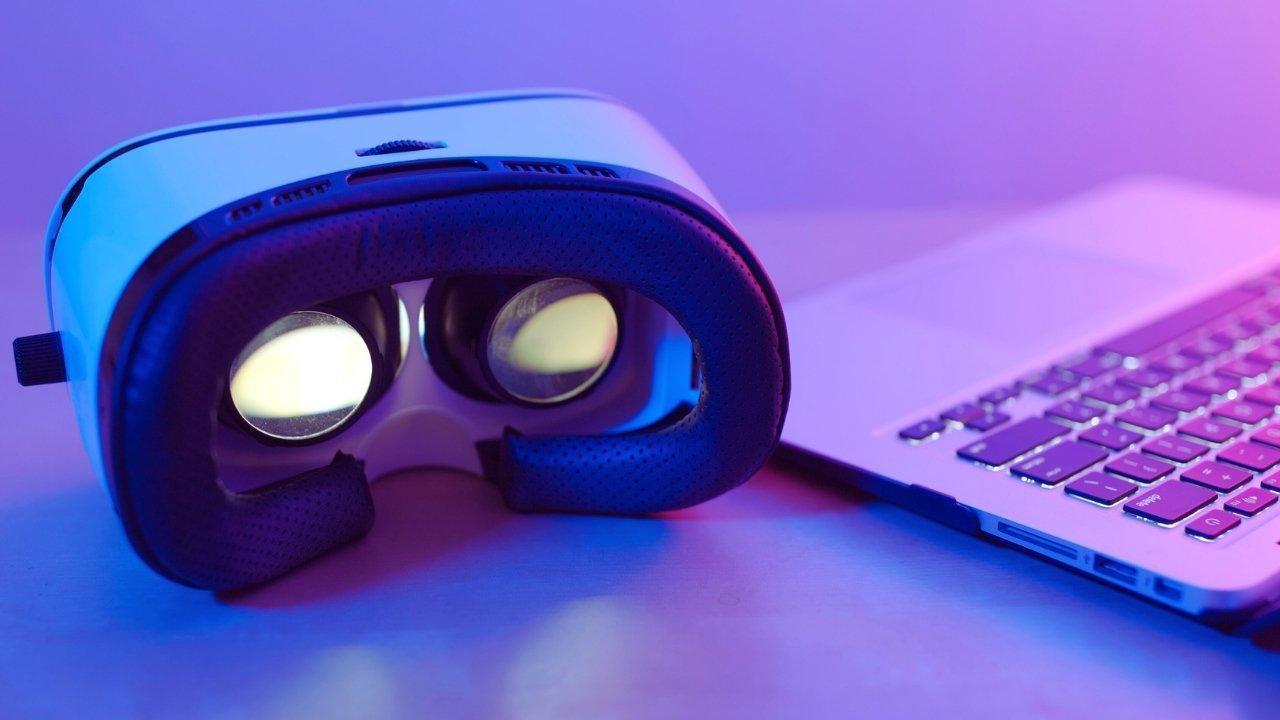
Join 10k+ people to get notified about new posts, news and tips.
Do not worry we don't spam!

Post by : Anis Farhan
Virtual Reality (VR) and Augmented Reality (AR) have long been associated primarily with gaming and entertainment. However, in recent years, their applications have expanded far beyond this domain. VR immerses users in entirely digital environments, while AR overlays digital information on the real world. Together, these technologies are revolutionizing education, healthcare, business, tourism, and more.
The global adoption of VR and AR is accelerating, driven by advances in hardware, software, and connectivity. Affordable VR headsets, AR-enabled smartphones, and faster internet speeds are making these technologies accessible to both consumers and professionals. The potential of VR and AR lies not only in immersive experiences but also in enhancing productivity, improving learning outcomes, and enabling innovative business models.
For India and other emerging markets, VR and AR provide opportunities to bridge gaps in education, healthcare, and skill development. By offering interactive, visual, and hands-on experiences, these technologies are changing the way people interact with information, products, and environments.
Education is one of the most promising fields for VR and AR integration. Traditional classroom learning often relies on textbooks, lectures, and two-dimensional illustrations. VR and AR, however, allow students to experience concepts in three dimensions, making learning more interactive and memorable.
For example, VR can transport students to historical sites, distant planets, or microscopic environments, offering experiential learning that books cannot replicate. AR applications can overlay anatomical structures on a mannequin in medical training or demonstrate chemical reactions safely in a virtual lab.
These immersive tools enhance engagement, improve understanding of complex topics, and accommodate different learning styles. Schools, colleges, and training institutes are increasingly incorporating VR and AR modules, particularly for STEM subjects, vocational training, and skill development programs.
Moreover, VR classrooms can connect students across locations, enabling collaborative learning without geographical constraints. AR-based textbooks and apps supplement traditional learning materials, ensuring a more holistic and engaging educational experience.
Healthcare is another sector experiencing significant transformation through VR and AR. Medical education benefits from VR simulations, allowing students and professionals to practice surgeries, procedures, and patient interactions in a risk-free environment.
AR technology assists surgeons by overlaying critical information on the patient during operations. For example, AR headsets can display a patient’s vital signs, imaging results, and 3D models of organs, enhancing precision and reducing errors.
Mental health care also leverages VR for therapies such as exposure therapy for phobias, anxiety, and post-traumatic stress disorder (PTSD). Patients can safely confront fears or practice mindfulness in controlled virtual environments. Rehabilitation programs utilize VR for physical therapy, providing interactive exercises that track progress and motivate patients.
By integrating VR and AR into healthcare, medical professionals can enhance training, improve patient outcomes, and reduce operational risks, while patients receive more personalized and effective treatment.
Companies across industries are adopting VR and AR to improve operations, training, and customer engagement. In retail, AR enables customers to visualize furniture, clothing, or accessories in their own spaces before purchasing. Virtual showrooms offer immersive shopping experiences without requiring physical stores.
Manufacturing and logistics benefit from VR training simulations, allowing workers to practice operating complex machinery or handling hazardous materials safely. AR overlays in warehouses can guide employees in picking, packing, and inventory management, increasing efficiency and reducing errors.
Corporate training programs leverage VR to simulate real-world scenarios, from customer interactions to emergency response drills. These immersive experiences enhance retention, reduce training costs, and allow employees to gain hands-on practice in a safe environment.
Furthermore, VR and AR facilitate remote collaboration. Teams can meet in virtual spaces, manipulate 3D models, and brainstorm ideas interactively, transcending the limitations of traditional video conferencing.
Tourism has been greatly enriched by VR and AR. Virtual tours allow travelers to explore destinations before visiting, enabling informed planning and accessibility for those unable to travel physically. Museums, historical sites, and cultural heritage locations use AR to provide interactive exhibits and immersive storytelling.
For instance, visitors can point their smartphones at artifacts to see animations, historical reconstructions, or multilingual information overlays. VR recreations of ancient sites or underwater ecosystems allow global audiences to experience cultural and natural wonders firsthand.
These technologies also support heritage preservation by digitally documenting monuments, artifacts, and traditional practices. AR and VR experiences attract tourists, enhance engagement, and provide educational value while preserving cultural integrity.
While gaming remains a prominent application, VR and AR are extending into other entertainment forms. Virtual concerts, theater performances, and interactive storytelling allow audiences to engage with content in immersive ways.
VR cinema experiences place viewers inside the narrative, offering a 360-degree perspective and interactive elements. AR apps enhance live events with real-time overlays, additional content, or gamified participation.
Streaming platforms are experimenting with VR and AR to create novel experiences, blending entertainment, education, and social interaction. These innovations redefine the relationship between creators and audiences, making content consumption more dynamic and engaging.
The architecture and real estate sectors leverage VR and AR for design visualization, client presentations, and project planning. Architects use VR to simulate building designs, walk through spaces, and identify design flaws before construction begins.
AR allows potential buyers to visualize properties, interior layouts, and furniture arrangements in real-time. This technology reduces miscommunication, accelerates decision-making, and improves customer satisfaction. Real estate companies use VR walkthroughs for remote clients, expanding market reach and enhancing sales efficiency.
By integrating VR and AR, professionals can reduce costs, minimize errors, and enhance overall project quality, benefiting both creators and consumers.
Despite vast potential, VR and AR face adoption challenges. High initial costs, hardware limitations, and the need for technical expertise can be barriers, particularly for small businesses and educational institutions.
Content creation for VR and AR is resource-intensive, requiring specialized skills in 3D modeling, animation, and programming. Additionally, user comfort, motion sickness, and accessibility issues need to be addressed for widespread adoption.
Data privacy and cybersecurity are also critical concerns. VR and AR platforms collect large amounts of personal and behavioral data, necessitating robust security measures to protect users.
Overcoming these challenges requires collaboration between technology providers, institutions, and policymakers to make VR and AR tools more affordable, scalable, and user-friendly.
The future of VR and AR is expansive and promising. Advancements in 5G connectivity, cloud computing, and AI integration will enable more realistic, interactive, and responsive virtual experiences.
Education will increasingly adopt hybrid VR-AR learning, combining virtual simulations with classroom teaching. Healthcare will see AI-driven VR diagnostic tools and AR-assisted surgeries. Businesses will continue using these technologies for training, customer engagement, and operational efficiency.
As hardware becomes more affordable and content creation tools more accessible, VR and AR will penetrate everyday life, influencing social interaction, shopping, travel, and entertainment. The convergence of virtual and augmented experiences promises a more immersive, informative, and interconnected world.
Virtual and augmented reality are no longer confined to the realm of gaming. They are transforming education, healthcare, business, tourism, and entertainment, offering immersive, interactive, and personalized experiences.
By enabling hands-on learning, enhancing decision-making, and creating new forms of engagement, VR and AR are redefining how people interact with information, spaces, and content. As technology continues to evolve, its applications will expand, making these tools indispensable across industries.
The journey from gaming to global utility underscores the transformative power of VR and AR. By embracing these technologies, societies can improve education, healthcare, and professional productivity while creating richer cultural and entertainment experiences.
This article is intended for informational and educational purposes. It discusses the applications of virtual and augmented reality across industries and daily life. Readers and businesses should consult technology experts and conduct further research before adopting VR or AR solutions.










Conway Shines as New Zealand Edges Out West Indies in Napier
Devon Conway and Rachin Ravindra propel New Zealand to a five-wicket victory over West Indies, clinc

Ja'Marr Chase Faces One-Game Suspension Following Spitting Incident
Bengals' Ja'Marr Chase receives a one-game suspension after spitting on Jalen Ramsey; his appeal has

England Names 12-Man Squad for Opening Ashes Test in Perth
England reveals a 12-man squad for the first Ashes Test in Perth, featuring Shoaib Bashir and a pace

Roger Federer Inducted into Tennis Hall of Fame in Historic First Year
Tennis icon Roger Federer receives Hall of Fame recognition in his first year, alongside renowned co

Steve McClaren Steps Down as Jamaica’s Head Coach Following World Cup Qualifying Draw
After a crucial goalless draw with Curacao, Steve McClaren resigns as Jamaica's head coach, leaving

Daryl Mitchell Tops ICC ODI Rankings, Updates Released
Daryl Mitchell ascends to No.1 in the ICC ODI rankings, with boosts for players from New Zealand, In